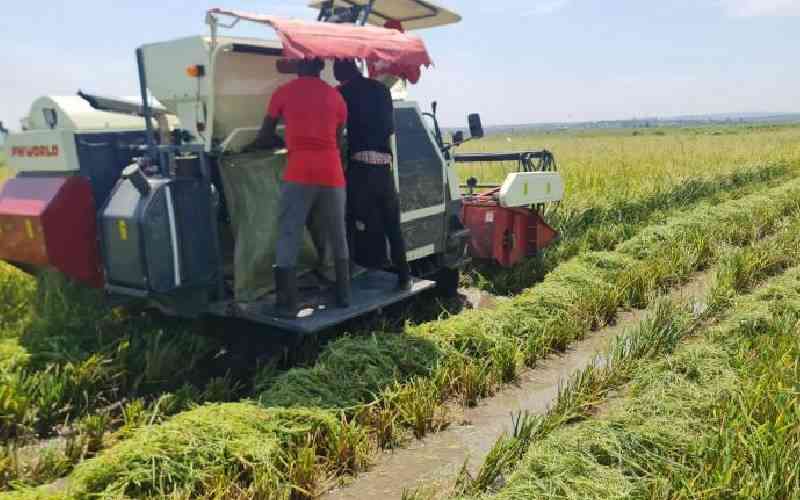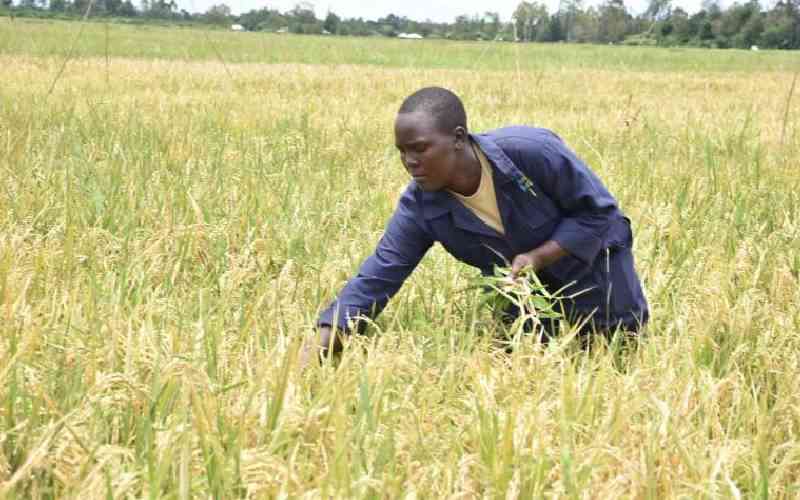Food insecurity will not be properly addressed without tackling soil fertility. In real sense, soil degradation in Kenya is at crisis levels.
Last month Agriculture, Livestock and Fisheries Cabinet Secretary Felix Koskei launched the draft policy on agriculture to boost food security and nutritional goals by 2030.
Reading through the document, anyone well-versed with the challenges facing agriculture will notice that it does not address soil fertility.
Currently, the condition of our soils is so bad that farmers are harvesting as a low as five bags of maize in an acre in places where they used to harvest 30 bags, in the 70s and 80s.
Soil health is the foundation of agricultural development, so there is no way the government can address the problem of food security without touching on the deteriorating condition of our soils.
Sadly, that is what the new agricultural policy intends to do.
Let’s look at the root cause of the problem:
Prolonged use of chemical fertilisers
Many years of chemical fertiliser use in maize growing areas in maize and sugar belts have rendered the soils unsuitable for agriculture unless drastic measures are taken.
Chemical fertilisers such as the diammonium phosphate (DAP), urea and CAN have been overused, yet most farmers continue using them for lack of knowledge on their proper use.
The increasing population and land subdivision continues to exert great pressure on soils as farmers strive to produce food to feed the extra mouths.
It is imperative that the government puts in place a comprehensive policy framework on soil fertility management.
This will ensure soil fertility in all farming areas are restored to increase productivity, improve food security and farmers’ earnings.
Need for soil testing
When President Uhuru Kenyatta launched the Kenya Soil Suitability Evaluation for Maize Production at Egerton University last year, there was at least a glimmer of hope that finally the government was doing something about the problem.
Stay informed. Subscribe to our newsletter
Soils in 44 counties had been mapped and nutrients that were deficient in each agricultural region identified.
The report had established that there was serious soil degradation in most farms and advised on the suitable fertilisers that needed to be used to correct the deficiencies.
Even before this report, the government had crafted another report Strategy for Revitalising Agriculture 2004-2014 which identified low and declining soil fertility as one of the major factors affecting the growth of agriculture.
Other than that, there is no soil policy that tackles issues to do with soil fertility and other concerns.
From these reports, it is clear that there is need for a national policy on soil fertility management to mainstream soil fertility in the agricultural development agenda.
Regulate fertiliser industry
As the situation stands now, there are conflicting legal and regulatory provisions that need to revised and harmonised.
For example, there is no regulatory body that supervises the manufacture, blending and distribution of fertilisers in the country.
With such confusion, farmers cannot tell the quality of fertilisers they buy; even a hardware shop can sell fertilisers since there is no authority that can vet and licence qualified dealers.
Middlemen have taken advantage of ignorant farmers and mix anything that resembles fertiliser in backstreet ‘factories’ which is later packaged in bags obtained from local fertiliser companies and sold to farmers.
Interestingly, the Fertilisers and Foodstuffs Act (CAP 345), that stipulates the regulations of fertilisers has been put under the purview of the Director of Veterinary Services (DVS). Our good lawmakers did not see the sense in assigning the role to the Director of Agriculture.
In the same Act, organic fertilisers or biofertilisers, compost and farmyard manures are not recognised as fertiliser despite their obvious importance.
Exploitation of farmers
Many farmers do not know where to take their soil samples for testing since there are no testing laboratories near them.
Realising there is a big problem regarding soil testing facilities, a number of NGOs and even companies have taken the initiative to do soil testing for farmers.
However, the quality of the services is worrying because there is no regulatory authority, which can set the standards on parameters that need to be tested.
The quality of the equipment used is also questionable.
That being the case on the ground, it follows that the results of such tests are questionable.
While the National Agricultural Laboratories charge Sh1,000 for every sample being tested, most of the NGOs charge Sh 4,000 to test the same.
And in most cases, some of the NGOs do not have any testing kits and all they do is to bring such samples to KALRO laboratories where they pay Sh 1,000 and then pass the results to the farmer who is forced to fork Sh 4,000.
Where do we go from here?
Back in 1970s and 1980s, the Ministry of Agriculture used to have a department specifically for water and soil conservation, which ensured that farmers in all hilly areas were trained on proper methods of soil and water conservation to stop erosion.
The department ceased operations when donor funds dried up.
Now the soil degradation in most hilly areas is catastrophic as millions of tonnes of soil are being washed down into rivers.
The situation has been made worse by illegal human settlements in water catchment areas where most rivers are choked and have dried up altogether.
The way forward is for the Ministry to first sort out the basic issues that affect agriculture like soil before addressing the macro problems.
The writer is an editor with The Organic Farmer, a farmers’ magazine published by ICIPE. The information carried in this article does not necessary reflect the views of ICIPE.
 The Standard Group Plc is a
multi-media organization with investments in media platforms spanning newspaper
print operations, television, radio broadcasting, digital and online services. The
Standard Group is recognized as a leading multi-media house in Kenya with a key
influence in matters of national and international interest.
The Standard Group Plc is a
multi-media organization with investments in media platforms spanning newspaper
print operations, television, radio broadcasting, digital and online services. The
Standard Group is recognized as a leading multi-media house in Kenya with a key
influence in matters of national and international interest.
 The Standard Group Plc is a
multi-media organization with investments in media platforms spanning newspaper
print operations, television, radio broadcasting, digital and online services. The
Standard Group is recognized as a leading multi-media house in Kenya with a key
influence in matters of national and international interest.
The Standard Group Plc is a
multi-media organization with investments in media platforms spanning newspaper
print operations, television, radio broadcasting, digital and online services. The
Standard Group is recognized as a leading multi-media house in Kenya with a key
influence in matters of national and international interest.







